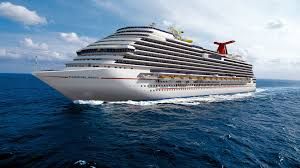Required Ballast Water Treatment Systems
Published on by Water Network Research, Official research team of The Water Network in Business
Ships over 400 gross tons are now required to adopt approved ballast water management plans.
In order to halt the worldwide spread of invasive or harmful marine species, the International Maritime Organization (IMO) passed the Convention for the Control and Management of Ships' Ballast Water and Sediments (BWM).
 For most ships this will require the installation of a type-approved ballast water treatment system. The convention, adopted in 2004, was plagued with delays for years, but now is finally "setting sail" as reported in a recent feature article published by Global Water Intelligence, the leader in high-value business information for the water industry.
For most ships this will require the installation of a type-approved ballast water treatment system. The convention, adopted in 2004, was plagued with delays for years, but now is finally "setting sail" as reported in a recent feature article published by Global Water Intelligence, the leader in high-value business information for the water industry.
The article titled "Starting the Voyage of a Lifetime", published in the February 2017 issue of Global Water Intelligence reads, "The long overdue ratification of the 2004 IMO ballast water management convention is expected to unleash a flood of orders for treatment systems."
How will the technology market shape up? Several expert industry members are interviewed throughout the article, and the overarching sentiment of the piece is that, with an estimated $50 billion at stake for ballast water treatment systems, suppliers, ship operators, and investors will be well-served by developing a thorough understanding of the challenges and potential solutions inherent to ballast water management.
The fundamental challenges facing new ballast water treatment systems are capital and operating costs, size and power requirements, efficacy, and residual toxicity. US Coast Guard approval is also crucial because as Don Stephen, VP Product Management at De Nora was quoted, "Very few people (operators) would take the chance of procuring a system that is unable to be USCG approved because almost certainly there would be a chance of the ship traveling into US waters at some point."
Ultraviolet and electro-chlorination are today's leading systems, but both have issues that must be overcome. For one, chlorination-based technologies do not typically treat water upon discharge of ballast water, but rather treat water only during uptake. UV systems, on the other hand, treat at both ends.
UV-based systems are not without their problems, however. While chlorine-based systems are capable of killing waterborne microorganisms, UV systems inactivate microbes by making them unable to reproduce, but leave them alive nonetheless, conflicting with the language of the IMO convention regarding discharged organisms.
In order to meet the USCG requirements, substantial power increases in UV systems were necessary to sufficiently neutralize organism activity. Tore Andersen, CEO of Optimarin, explained to GWI how the company was able to overcome this potential challenge. "We used our high power capacity - the biggest difference between Optimarin and other UV makers is our very strong UV lamp."
Source: Yahoo ! Finance
Media
Taxonomy
- UV Disinfection
- Ultraviolet
- Ultraviolet
- Water Treatment Solutions
- Environment
- Ballast Water
- Environment
- water treatment
- Ultraviolet Technology
- Ships
2 Comments
-
Ест более эффективный метод обеззаразить балластные воды! раз и навсегда! с минимальными затратами менее 1 кВт на 1 м3
-
The Bioremediation technology and process has been around for 40 Years. They have a Zero pathogens discharge record unequalled in any industry. Sounds like some globalists fleecing the sheep. The microbe used is called Archaea. The process is called Bioremediation. To learn more of modern microbiology go to Archaea Bioremediation Group. countless applications.